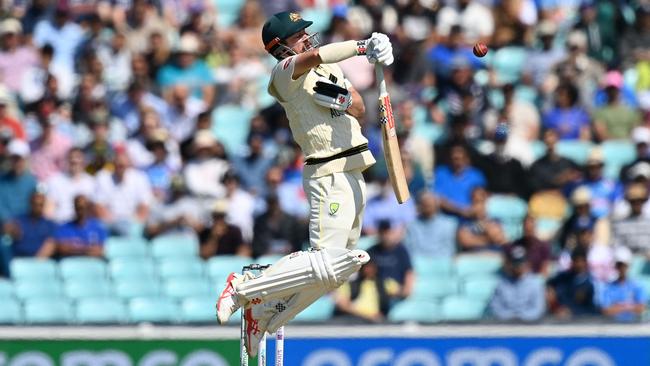Head masters the art of good, bad batting

His 163 from 174 balls in the World Test Championship final, the first century in that fixture, has now taken this capability to the world, where previously it had been largely for home consumption – as reflected in a Test average in Australia of 58 and abroad of 27 going into the match. By the end of the Ashes, the gap should have narrowed further.
So what goes into a game like Head’s, which Ben Stokes confided a week or so ago made him as challenging a rival as anyone in Australia’s top six?
“He was so hard to bowl to in Australia when we were there last time (2021-22) because he just threw counterpunches,” said England’s captain – no stranger to using opponents as speed bags.
“Counterpunching’’ – essentially the choice to attack when the orthodox response to a scoreline might be to defend or consolidate – may be counterintuitive but it is not illogical.
Attacking field settings and bowling to wicket-seeking lengths are also favourable to enterprising batsmanship. So a bit of nerve can go a long way.
Head himself has also always been a batter harder to subdue than to get out. His maiden T20 hundred took 53 balls; he has made two List A double hundreds. He relies on fast hands to make up for flat feet, but his attacking options are broad: he not only savages width but owns anything bowled too straight; left-handedness and sharp running enhance his value further.
That makes for rapid impact, and the boundaries that Head peeled off through and over the leg side after coming in with Australia having lost three wickets in the first 25 of the innings on Wednesday seemed to turn the match in a trice.
After 16 deliveries, Head was 27. Bowlers who had come into the match after two months of one and two-over spells in the Indian Premier League suddenly found themselves challenged to maintain consistency for anything longer.
The Oval’s outfield is as frictionless as a polished mirror: Head would eventually hit 24 fours, one six, and only one three. But India had to keep attacking in order to justify their decisions to bowl first and to exclude off-spinner Ravi Ashwin (who has dismissed Head thrice in six encounters, just saying).
Rohit Sharma’s struggle to contain is reflected in the balls Head took for each of his half-centuries: 60, 56 and 48.
Any prolonged innings by Head, it is also true, contains its share of miscues and misfires, and this was no exception. Between the powerful cuts, pulls and punches, he scattered some wacky wafts and ham-fisted hooks.
Twice he was hit on the bonce; he nearly dragged on; he top edged into space. When the ball was hip high, Head looked like he’d been administered a shock with an electric cattle prod.
But his control percentage of 69 per cent proved less significant than his intent percentage of 100 per cent.
The South Australian reminds you of the phrase ‘‘good bad books’’ that Orwell popularised for “the kind of book that has no literary pretensions but which remains readable when more serious productions have perished”.
For Head is a master of good bad batting. He lays no claim to easeful style or technical precision yet has found a way to accumulate more than 10,000 first-class runs.
It is not only the moustache that lends Head a 1970s retro chic; the unself-conscious roughness of his technique has defied the homogenising influences of coached conformism and video self-scrutiny. Like Doug Walters, he can contribute useful overs also.
Stokes and Baz McCullum now have more counter-counterpunching to contemplate. With his reliance on boundaries, Head will likely find himself hemmed in with more defensive fields; with his propensity for closing off, he will cop a lot more along the body. His Head-to-heads with Moeen Ali are unlikely to last long either way.
Early thought in England had been that the Labuschagne-Smith axis would prove the home team’s most formidable obstacle in these Ashes. Australia’s number five has now countered that too.



Pretty soon you will look up the word “counterpunch” in the dictionary and find a photo of Travis Head. Since the start of the last Ashes, he has become Australia’s beacon of bouncebackability, as hard to bowl to as David Warner in his pomp and nearly as reliable.